How to keep a mattress topper from sliding – 5 simple ways to secure your bed
This bedding essential should sit securely on your bed for maximum effect - so here’s how to keep a mattress topper from sliding
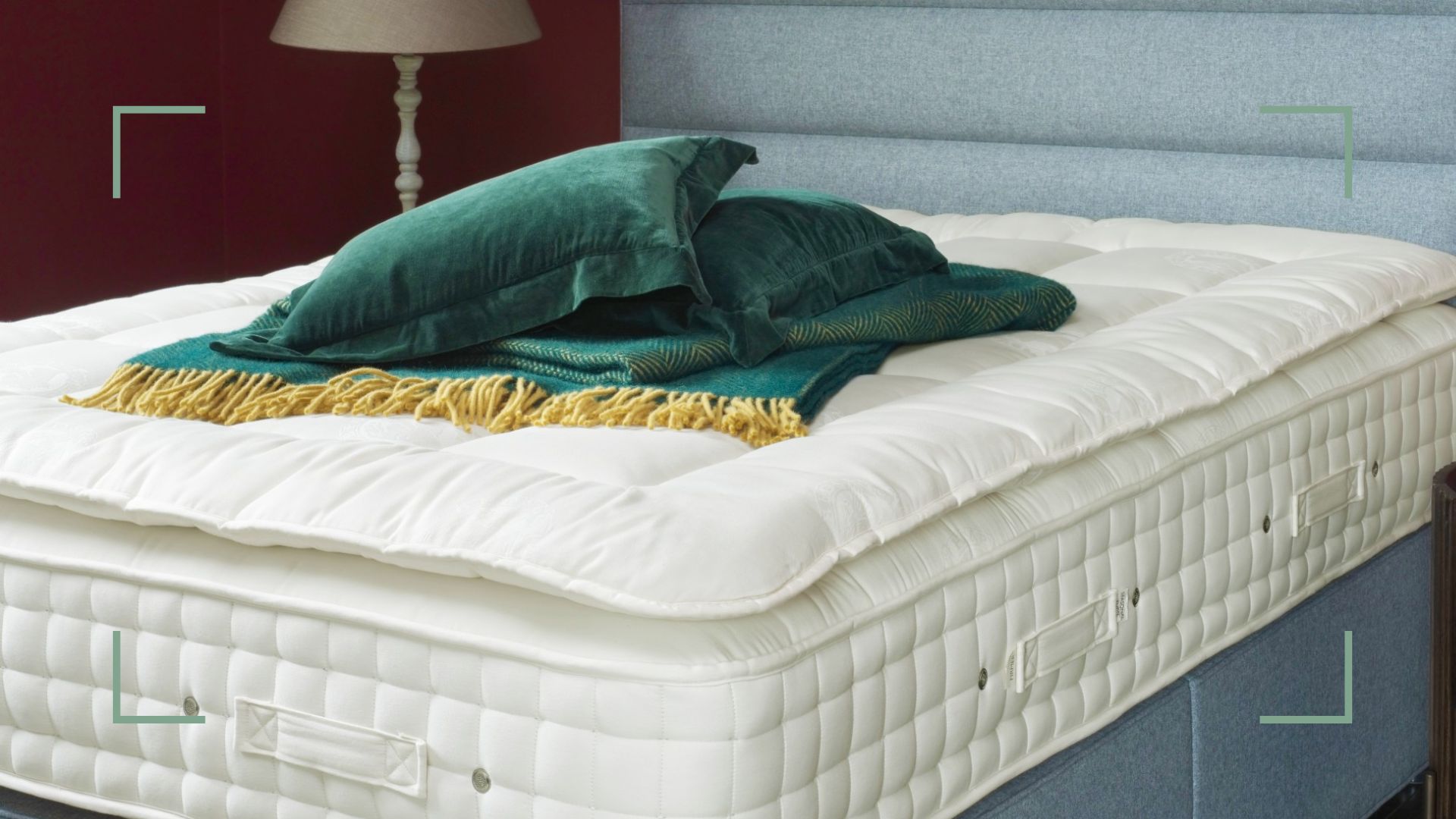
Mattress toppers are a super luxurious addition to the bed for many people. However, one of the downfalls of even the best mattress toppers is that sleepers sometimes experience them sliding down or off the bed, or moving around during the night. If this feels familiar to you, this is how to keep a mattress topper from sliding.
Toppers for your mattress can be a great way to add an extra layer of cushioning to your bed, improve your sleep hygiene, and even totally reinvigorate a mattress that has lost support.
But their effectiveness is seriously reduced if yours spends half the night sliding around. And if you have decided you need a mattress topper to create a better sleep environment the last thing you want is to be irritated and disturbed by it moving or sliding around.
But there's no need to return yours; happily, there are several simple ways to help secure a mattress topper to your bed if yours isn't staying put. Best of all, lots of these methods are affordable and easy to achieve too, requiring little to no effort or DIY.
How to keep a mattress topper from sliding
Whether you have a cooling mattress, a microfibre mattress, a pocket-sprung mattress or any other type of mattress, a sliding mattress topper is something you might experience at some stage.
It doesn't necessarily mean there is anything wrong with your topper or the mattress (though some lower-quality toppers are guilty of sliding more than others); some mattress toppers simply don't have elastic straps to enable you to secure them properly.
Even the toppers with elastic straps can come loose sometimes – so it's important to know how to secure your topper to the bed if it ever moves around your bed.
Sign up to our free daily email for the latest royal and entertainment news, interesting opinion, expert advice on styling and beauty trends, and no-nonsense guides to the health and wellness questions you want answered.
1. Use a fitted sheet that is the right size
If your mattress topper doesn't feel secure, Amanda Castle, a sleep expert at Hypnos Beds explains that the first place you should turn to address the issue and help you sleep better is your fitted sheet.
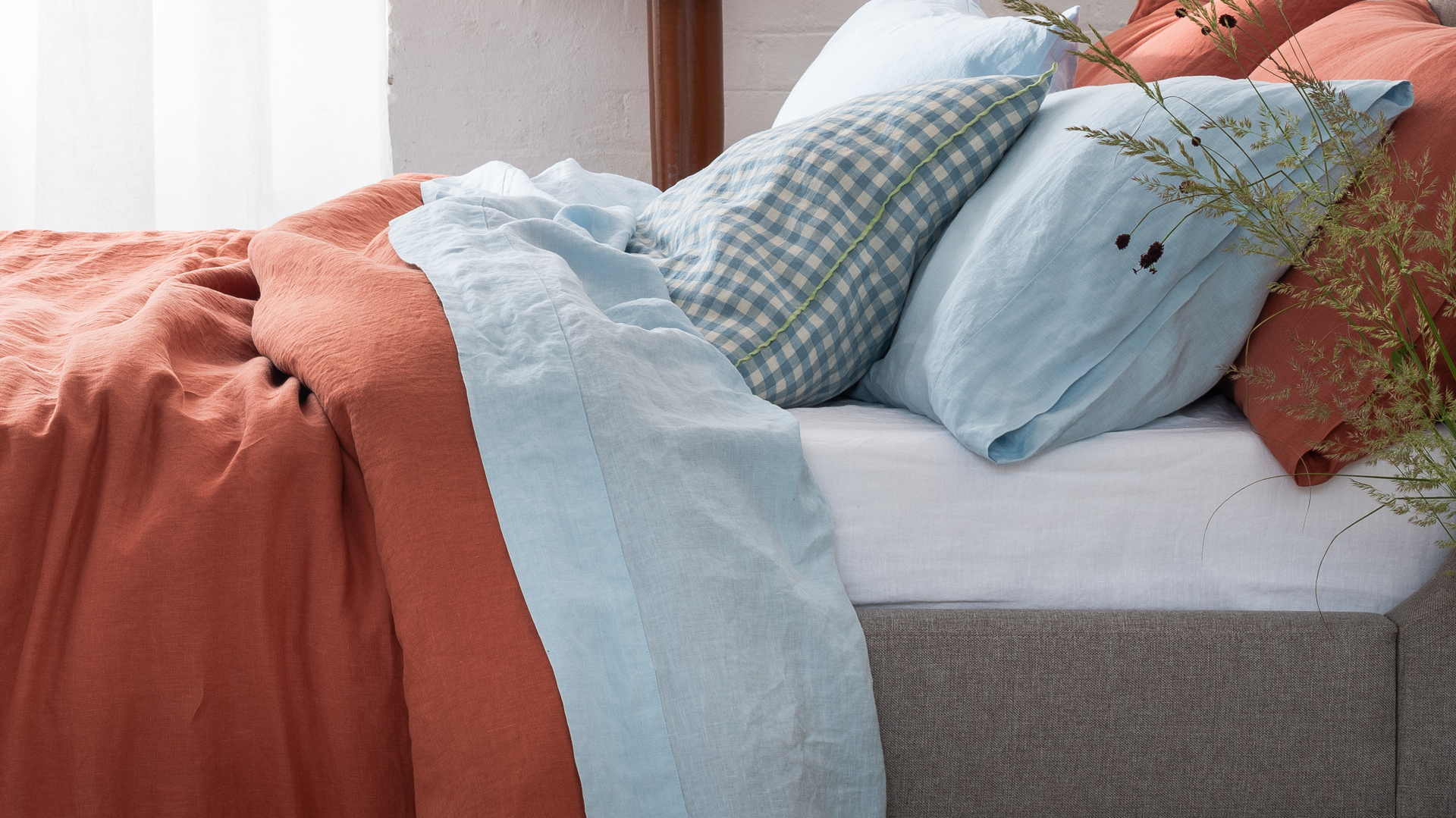
"There are many reasons why your mattress topper might be slipping and sliding, including improper size, tossing and turning in the night, or more simply the topper is of poor quality," Amanda says. "Luckily, there is a quick fix to keep this problem from disrupting your sleep - using an appropriately sized fitted sheet. This is often all that is required to keep your mattress topper from moving.
For example, if you’re still using the best sheets you used before buying your mattress topper, they could be too small now.
Theresa Schnorbach, Sleep Expert at Emma explains, "It’s important to keep in mind that a topper can add anywhere from 1-4 inches to the height of your mattress so, depending on the bedding you already have, you may need to invest in a tightly fitted sheet to ensure your topper doesn’t slide."
And the reverse can also be true, Amanda says. "If your fitted sheet is too big or has lost its elasticity at the corners, it may become untucked during sleep."
"The sheet should fit tightly over the mattress and topper, helping to hold everything in place and add extra grip, so look for bed sheets with a deep pocket! We’d also always recommend that you refer to the instructions from the manufacturer to prevent your topper from sliding."
2. Buy a fitted sheet with straps – or create your own
If you’re struggling to get your mattress topper to stop sliding even with a tighter fitted sheet with deep pockets, an alternative is purchasing a sheet with elastic straps on each of the four corners. These straps are invaluable in securing your bedding.
Jessica Hanley, founder of Piglet in Bed, says. "If your mattress topper tends to slip and slide around the bed, secure your topper with stretchable sheet strappers. These are great because you can hook them onto each corner of the mattress topper and slide the band under the mattress. This method is not only a gentle way to secure your topper, but it also effectively prevents it from bunching."
There’s also usually less risk of sheets with straps popping off during the night than when using a regular fitted sheet without straps.
However, if you don’t want to invest in new sheets, Olivia Walton, manager at Bedz4U explains that there is a way to achieve this trick on a budget. "Try sewing some fabric straps of elastic bands on each corner for a DIY approach," she suggests.
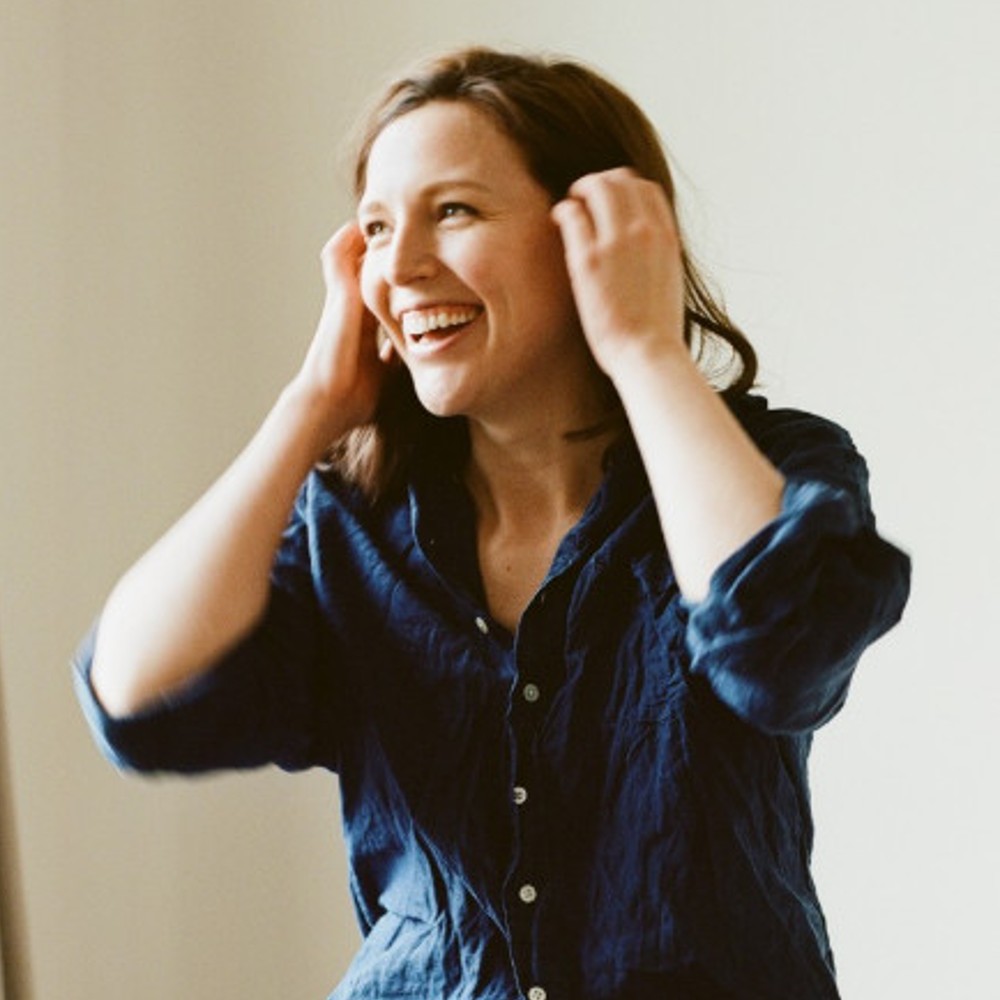
Jessica Hanley founded Piglet in Bed, a thriving eco-friendly cotton and linen bedding company in 2017.
3. Use a mattress encasement
For a slightly more unconventional option, purchasing a mattress encasement can be a brilliant way to secure your mattress topper and prevent it from sliding around your bed.
A mattress encasement is a large sheet that goes around the entirety of your bed - from under your mattress up to your pillows. It's essentially like wrapping all of your bedding (mattress, mattress topper, mattress protector) up in one giant present, to keep everything secure. Most of them zip up and are fastened into place with velcro clips, keeping everything neatly in place.
"A mattress encasement can be useful for keeping a topper in place. Just ensure that the dimensions of the encase will allow enough room for both the topper and the mattress to fit comfortably," Olivia says.
And if you're wondering how long mattresses last, a mattress encasement can also help to prolong the life by protecting it from damp, dust and any other spills or stains. This can also reduce the amount you may need to deep clean your mattress.
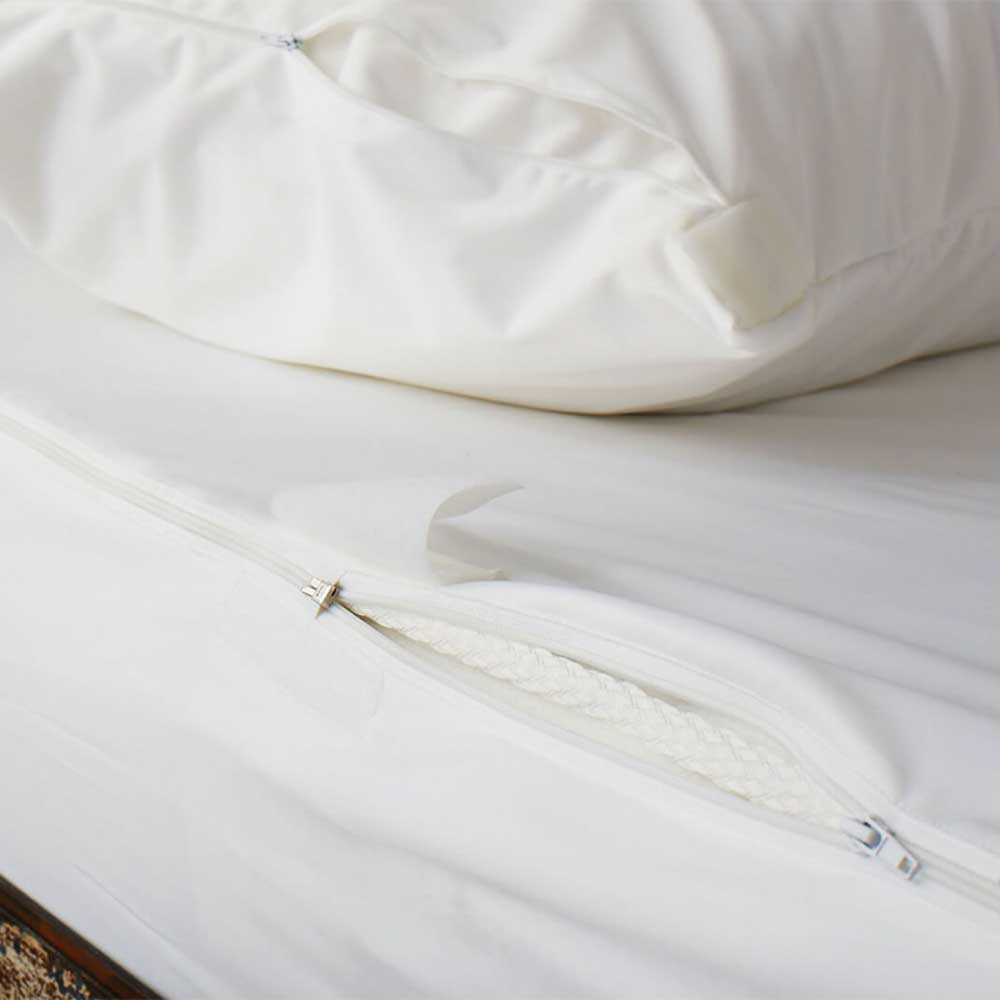
Keep your topper secure this 4-in-1 protector. It also defends your mattress against dust mites, bed bugs and allergens and keeps your mattress dry and stain-free.
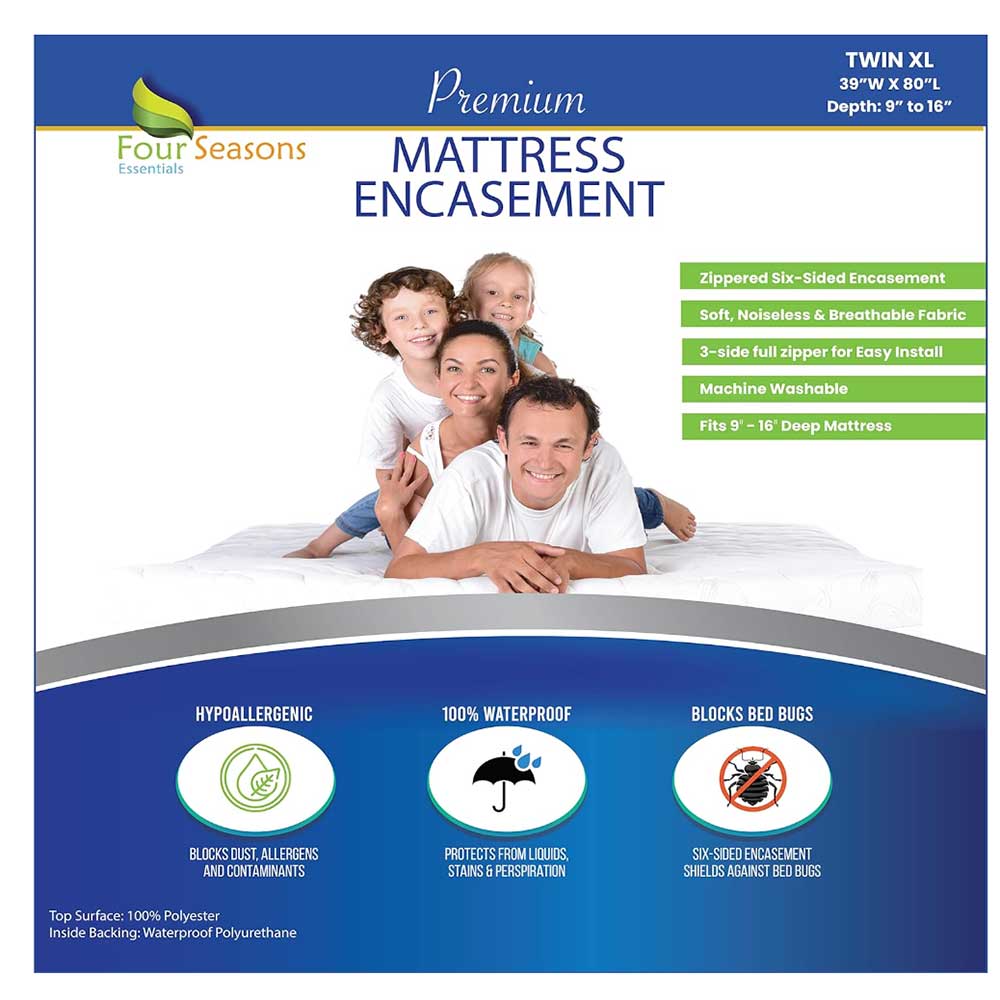
This mattress protector zippered bed bug waterproof encasement is a premium quality cover which also protects against dust allergies – as well as keeping your topper in place.
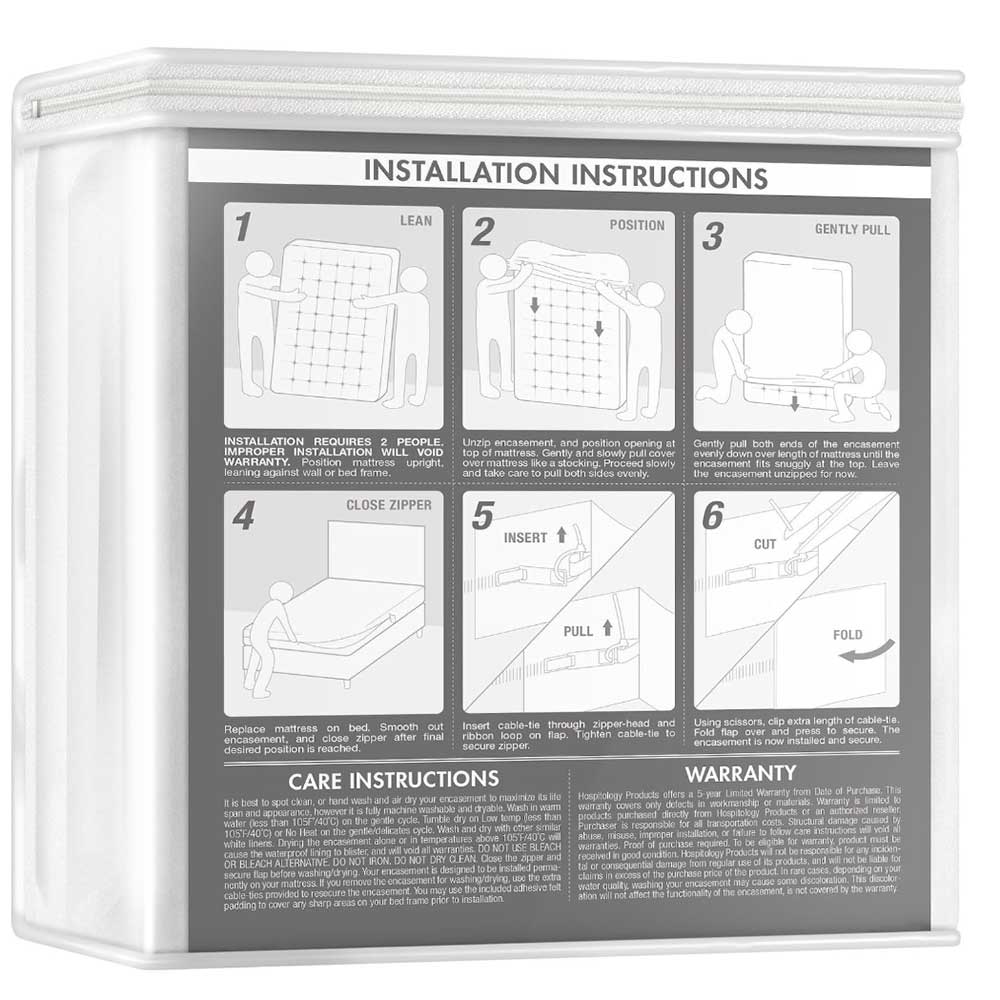
Protect all your bedding components with this ultra low profile sleep defence system that is designed to be undetectable in order to aid with comfort.
4. Install a non-slip pad
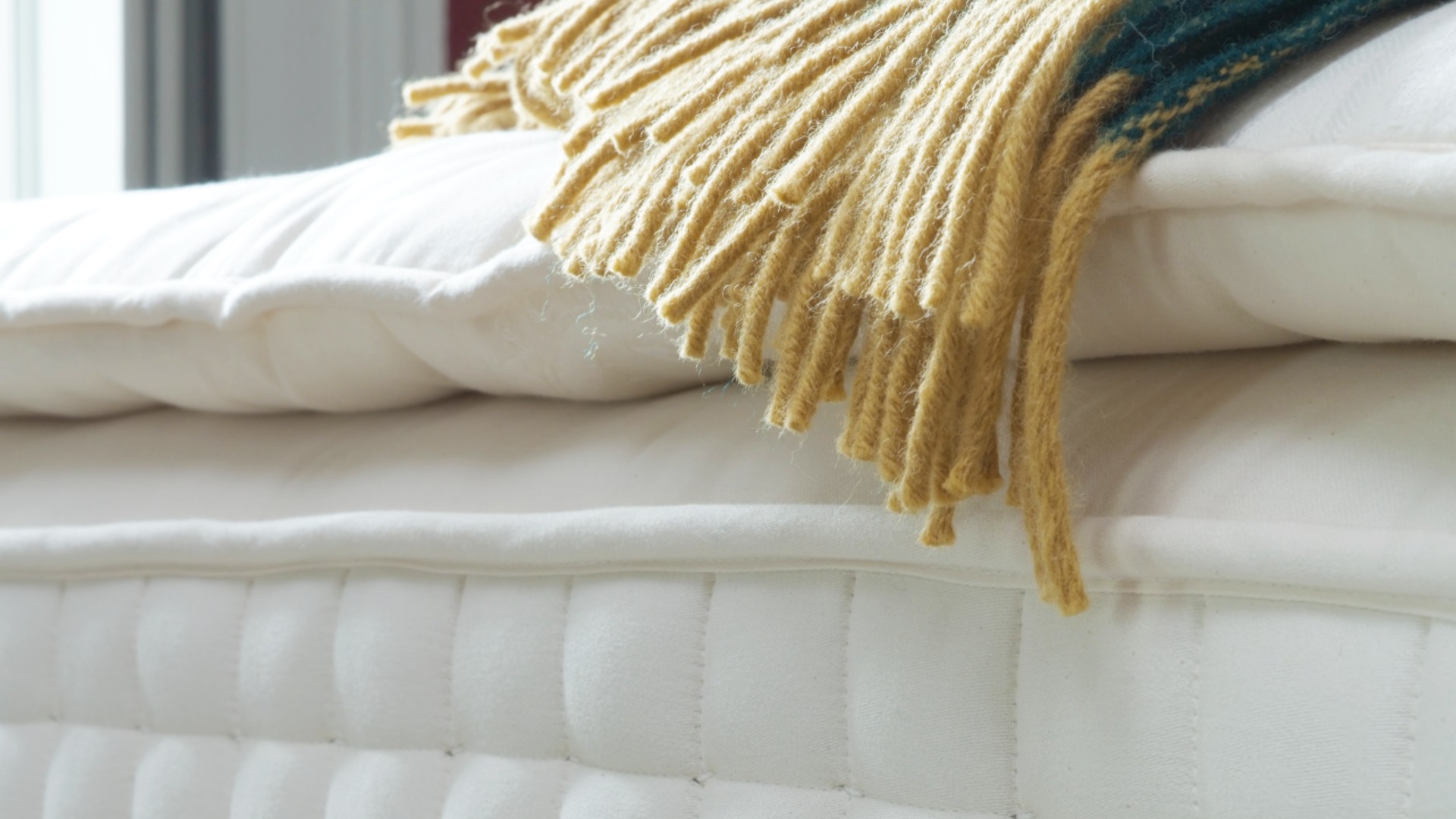
One very simple way to prevent your mattress topper from moving as you sleep is to add a subtle extra layer to your bedding in the form of a non-slip pad, which should secure the topper nicely.
Emma Beck, buying and merchandising manager for Bensons for Beds explains, "You can opt for a topper with a non-slip underside, or invest in a mattress gripper or anti-slip mat, and then place this between the topper and the mattress." You can usually get a mattress gripper or non-slip pad to cover your entire bed. Similar to this JC-Houser Durable Non-Slip Mattress Gripper Pad at Amazon.

Emma has worked at Bensons for Beds for 10 years and is a fundamental part of the Bensons’ team. In Emma's day-to-day work, she aims to provide Bensons for Beds customers with market-leading products to suit individual needs.
5. Secure it with velcro strips
If you’re after another super affordable solution for how to keep a mattress topper from sliding try a DIY velcro option. We suggest securing it into place with velcro strips works well if you feel comfortable.
You can buy heavy-duty, industrial-strength velcro strips at Amazon cheap. If you don't want to purchase anything new, you can often repurpose old scraps of velcro to perform the same job. Olivia says, "Velcro strips are another great way to combat friction and prevent the topper from shifting."
Tielle Love Luxury’s co-founder, Robert Lancaster-Gaye agrees that this is a brilliant method for securing your topper – but explains that readjusting your mattress topper regularly is also key for keeping it in great condition.
“I have tried tacking Velcro to the top edges of my topper and my mattress, and this definitely helps secure your mattress topper to your bed. But, an important fact is that to stay at its best, a topper should be shaken and aired on the bed regularly, to keep it fluffy and perspiration-free, so don’t forget to regularly adjust and air it if it’s tightly secured to your bed in this way."
FAQ
Should a mattress topper go under or over a mattress protector?
It's one thing knowing how to keep a mattress topper from sliding, but if you have multiple items on top of your bed – such as a mattress topper and a mattress protector – it's important to ensure that everything is laid in the right order, to ensure the items can do their job properly to keep you comfy and protect your mattress.
To understand where a topper should go in relation to your mattress protector, it’s actually key to understand the different functions of each one. Put simply, mattress toppers are mostly used for comfort and support, while mattress protectors are (as the name suggests) there to protect your mattress and maintain its quality.

"Designed to sit on top of your mattress, mattress toppers help to cushion the body and act as an additional comfort layer for the sleeper," Amanda explains. "Meanwhile, a mattress protector is used to protect your mattress from spills and dirt, helping to keep it fresh and, as a result, prolong its lifespan."
However, Emma suggests that there's no harm in doing it the other way around
if that's your preference. "Whether a mattress topper should go under or over a mattress protector depends on personal preference and specific needs. "This allows the protector to form a barrier for the topper too, helping to protect against bacteria and dust mites."
"Yes, placing the topper under the protector allows for direct contact with the mattress surface, maximising its cushioning effect. However, placing the mattress topper over the protector also provides an additional barrier against spills and stains, extending the lifespan of both the topper and the mattress."
You should also be washing both your mattress protector and mattress topper regularly, to ensure that both items are still doing their jobs as best they can, and are as hygienic as possible.
Amy Hunt is an experienced digital journalist specialising in homes, interiors and hobbies. She began her career working as the features assistant at woman&home magazine, before moving over to the digital side of the brand where she eventually became the Lifestyle Editor up until January 2022. Amy won the Digital Journalist of the Year award at the AOP Awards in 2019 for her work on womanandhome.com.

